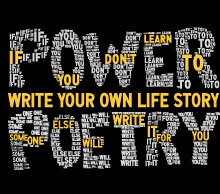
As long as people have written, there have been movements informing their stylistic choices. These movements usually reflect global events like wars, changes of social structure, or shifts in power. When you read a work that is representative of a movement, that work is informed by what was happening in the world to spark the movement it is a part of. Often, literary movements existed within a larger artistic movement that included music, visual art, film, and writing all following a similar philosophy. Understanding different movements can help us better understand the writers and works we enjoy, and can provide guiding ideologies you can use to grow your own work. Take a look at these six major movements and see what speaks to you.
Top 6 Literary Movements
- Romanticism (1800 to 1850). Championed by authors like William Wordsworth and Emily Dickinson, Romantic authors often used themes of the individual, imaginative, and emotional in their works. The movement explored the effect of leaving behind the strict order that was cental to Classical and Neoclassical works, as well as departing from the heavily rational basis of the Enlightenment period. As a result, many Romantic works feel relevant today, where individual, imaginative, and emotional themes are important to many modern works.
- Transcendentalism (1820 to 1840). Transcendentalism evolved as a reaction to intellectual and spiritual values that were often used to excluse less educated people in the 1800's. Transcendental works focused on the more universal themes of the inherent goodness of people, and the presence of nature. If these themes sound familiar, that is because the movement evolved from Romanticism in England and Germany. Authors central to this movement included Ralph Waldo Emerson and Margaret Fuller.
- Modernism (1870 to 1940). The first literary movement of the 20th century, Modernism sought to depart from tradition, and explore the the use of literary form for self-expression. Modernist writers like Edna St. Vincent Millay and T.S. Eliot subverted traditional writing practices by using unreliable narrators who reflected on absurd or irrational representations of reality, science, and philosophy. This shifted works from being largely human and nature focused, to more diverse themes.
- Harlem Renaissance (1918 to 1930). In the years before The Great Depression, the Harlem Renaissance emerged from a growing group of young black artists and writers like Langston Hughes and Zora Neale Hurston. It was a movement of self-expression and acceptance for minority writers, giving them a voice to express their experience and culture to a wider audience than they previously had. The movement also produced a subgenre of jazz poetry - poems that drew their rhythm from the popular jazz of the 20's.
- New York School (1950 to 1970). The New York School art movement had a diverse range of visual and literary arts, all of which share a similar philosophy of spontaneity. While the writing was not confessional, it was often stream of consciousness and articulate. Using surreal imagery, it looked at topics ranging from light, to violent, to purely observational. Frank O'hara is often considered the central figure of the New York School movement, because of his involvement in both visual and literary arts, but many other artists both in and outside of New York were significant figures in the movement.
- Postmodernism (1960 to 1990). One of the most recent literary movements, Postmodernism, has taken the ideology of Modernism a step further. Beyond just the use of unreliable narrators and philosophical grounding, Postmodern works often shape their meaning in relation to other works and the world around them. Because of this, the works are often political, and center on acts of overt or subversive rebellion. In this movement pastiche became central to many works like Margaret Atwood's use of fairy tale imagery alongside ominous language in The Circle Game, allowing authors to layer themes of social and political commentary, dark humor, and the interconnection of existing works.
